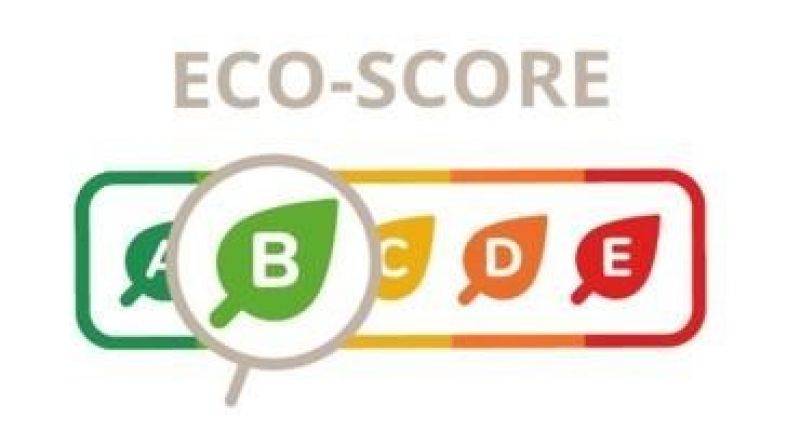The “Eco-score” gets a meagre C from Dutch consumers
The Eco-score is a sustainability logo developed in France that shows the combined environmental score of a food product. Its concept is similar to that of the Nutri-score logo (about how healthy a food product is) and the Energy-label (about how energy efficient an electrical appliance is). The Eco-score ranges from an A to an E (from green to red), where products get a score on the basis of a life-cycle assessment. The four indicators in this assessment are: how it is produced, origin of the ingredients, packaging, and how the product impacts endangered species. This Eco-score label is meant to help consumers identify products with a less harmful impact on the environment more easily and quickly.
On our Food Forum, we asked 56 Dutch members what they think of this eco-score.

Main takeaway
The Eco-score has the potential to offer consumers a helping hand in identifying sustainable products more quickly, but is not a replacement for already existing logos. Consumers are exposed to too many visual cues, potentially causing confusion between the different logos. Additionally, it is important for consumers that they still have the freedom to make consumption decisions regarding sustainability. Factors that are important for the consumer may be ones the assessment criteria of the Eco-score does not account for. All in all, the Eco-score is unlikely to turn consumers away from their favourite snacks even if that snack had a low Eco-score. It is also unlikely to be the main motivator for a purchasing decision.
It’s difficult for consumers to gauge the sustainability of food products
It is difficult for consumers to estimate how sustainable a food product is and many of our Food Forum members have said so in multiple discussions. A handful of our members have said that the Eco-score could be helpful to make it easier for them to identify sustainable products on food packaging. The same group find that the logo is clear and easy to understand.
“I find the eco-score to be a useful helping tool because I find it difficult with many products to estimate how sustainable it is and then the eco-score would give a quick overview. That’s why I would like to see it on packaging” Bianca (47)
Too many logos
However, many participants see the Eco-score as one of too many visual cues. Many expressed strong feelings of annoyance at the number of (sustainability) logos. Rather than functioning as a logo to simplify sustainable decision making, the Eco-label makes decision making even harder. Our members even questioned the authenticity of the label, and wondered whether the Eco-label could be better than the other environmental labels (e.g., Rainforest Alliance, MSC, etc.)
“I don’t see the point, yet another logo on the packaging. Completely overwhelming” Linda (44)
“No, I don’t want more logos on packaging. There’s already so much on the packaging of a product, more than even about the CONTENT. For me, I don’t want it.” Vanja (29)
Therefore, for the Eco-label to have maximum impact, it would need to be a universal label that renders other labels redundant. To simplify decision making for consumers, less deciding factors are needed. At the moment, the Eco-score label only adds to the already prevalent confusion about food sustainability.
Counterproductive
The Eco-label may even be counterproductive. Some participants discussed the healthiness level of products, confusing the Eco-label with the Nutri-score label. The traffic light system, while easy to identify is therefore already associated with the Nutri-score label, and consumers may in the future choose products based on the wrong motivation for them, believing something to be healthy when it may only be sustainable, or vice versa. For instance, when asked about the Eco-label, one of the many answers from our members resembled the following:
“I think this is a practical score to look at how healthy a product is. I don’t use it for all products” Ellen (55)
Great in theory
While many admitted that the Eco-score label would benefit society, the majority are not sold on the idea yet. Members mentioned that the logo does not provide a ‘complete picture’ of how sustainable something is, question whether this logo can be trusted, and commented on how the label does not take into account the different personal priorities different consumers have regarding sustainability. Additionally, participants expressed that the explanation behind the workings of the Eco-label would need to be more extensive, while remaining understandable.
“The idea in theory is alright. It potentially offers more useful information than the Nutri-score (because you can also look at the ingredients and nutritional value and decide for yourself). But then it has to be explained, in a way that the score would become clearer” Micha (42).
Find out more:
Contact us to find out more about the results, or how we can tailor consumer insights to your product or company.
We believe that understanding consumers is key to making the food system more sustainable. Successful innovation and impactful communication require a solid foundation of consumer insight.
We are the insights partner of choice for food companies and non-profits that aim to have a positive impact on society and our planet. Together we empower consumers to make food choices that are good for them as well as for the planet.
The Hague Tech - Waldorpstraat 5 - 2521CA - The Hague
(+31) (0)70 2042314 - Info@futureoffood.institute
Contact
Fill in this form and we'll be in touch shortly!
Newsletter
Do you want to receive a monthly dose of insights, opinions and events? Please subscribe to our newsletter.









